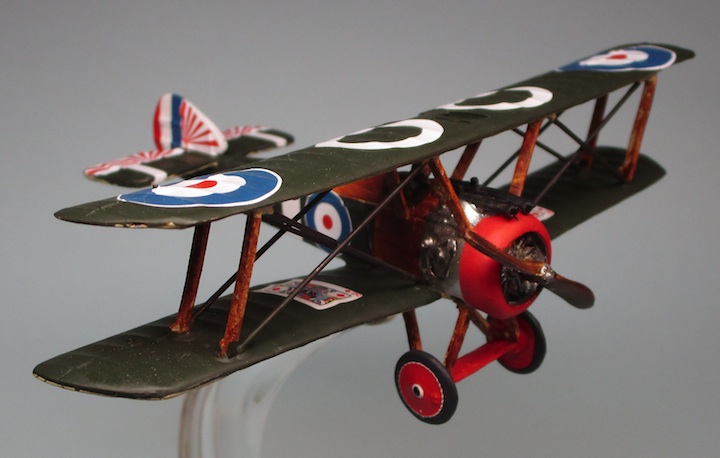Notes: Designed as a heavier, more powerful refinement of the Sopwith Pup, the Camel was first flown in 1917. Earning its name from the distinctive humped fairing surrounding its twin .303 Vickers machine guns, the Camel's unforgiving flight characteristics claimed the lives of many students in flight training. In the hands of a skilled pilot though, it was an extreme dogfighter that could out-maneuver any contemporary with the possible exception of the Fokker Dr.I. Common for airplanes of that era, a fixed crankshaft configuration allowed the entire engine to spin with the propeller, creating strong gyroscopic forces that adversely affected the airplane's handling under power. Together with the S.E.5a, the Camel helped gain superiority over the German Albatros and is credited with shooting down 1,294 enemy aircraft, more than any other Allied fighter.
Sopwith Camel B6401 was flown by Lt. L. S. Breadner, a Canadian, for No.3 Sqn RNAS in the Dunkirk area in late 1917. The white diamond on the rear fuselage therefore has a green maple leaf painted in it and unique sun rays applied to the fin and elevators. The King of Diamonds playing card painted on the top surface of the lower wings is another distinguishing mark of this aircraft. After Breadner flew it, the plane saw active service with other squadrons through 1918 with it finally being written off in September of that year.





 Up
Up